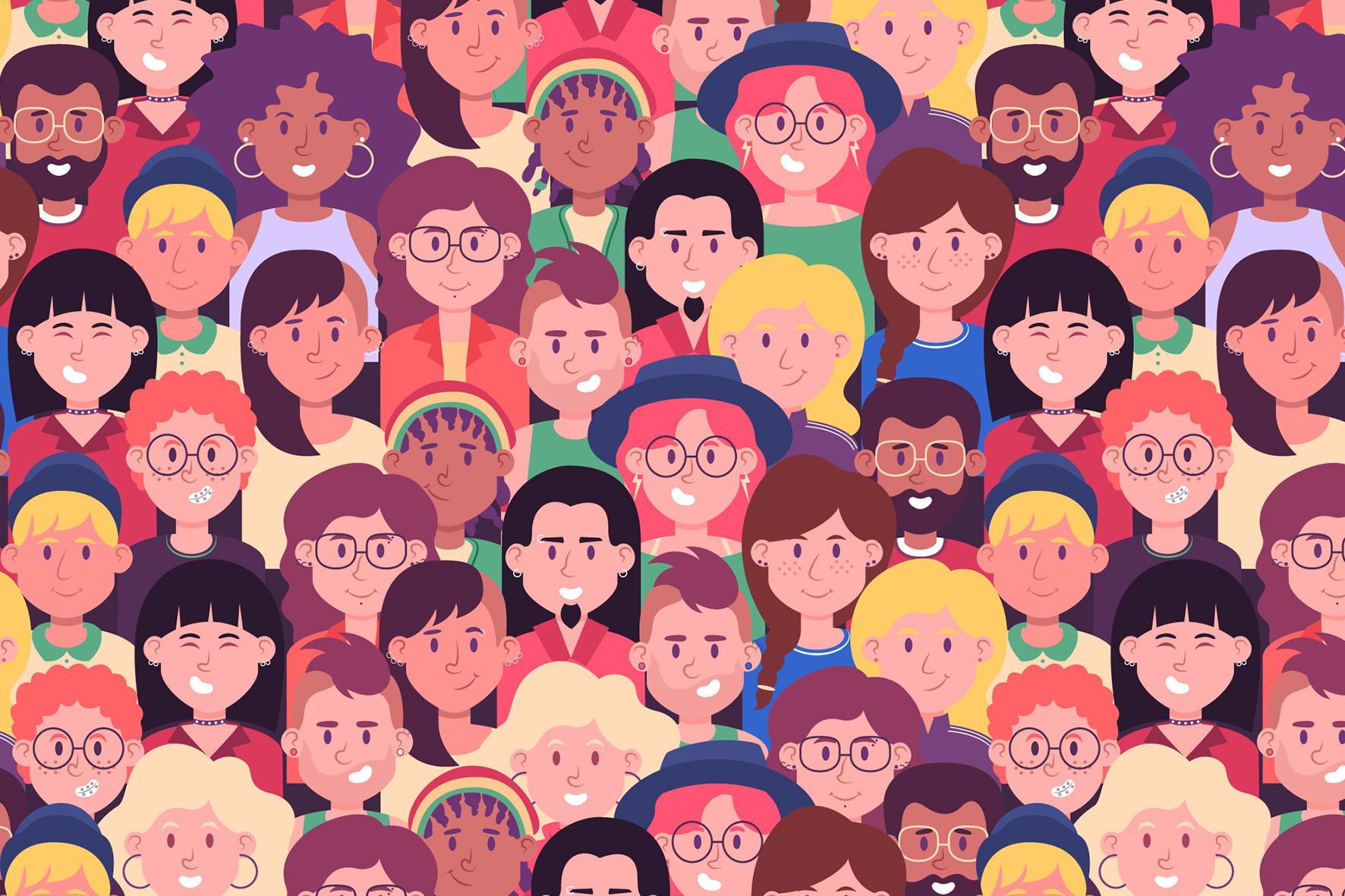- 14 3402-5578
- Rua Hygino Muzy Filho, 737, MARÍLIA - SP
- contato@latinoobservatory.org
 Imagem de pikisuperstar no Freepik
Imagem de pikisuperstar no Freepik
Latino identity in the United States is often associated with Spanish-speaking Latin American countries. However, from the point of view of Latin American countries, Latinos are the populations that inhabit the countries colonized by Portugal and Spain. These share many sociocultural characteristics, such as Latin-based languages, Moorish and Jewish influences from the Iberian Peninsula, the Catholic religion, miscegenation between Europeans, indigenous peoples and Africans and many aspects of cuisine, music and dance. In theory, there are many more points of intersection between the cultures of the Spanish and Portuguese Americas than of differentiation.
In the case of Brazil, the official language is Portuguese, but as in Spanish America, its identity is also shaped by a cultural diversity that includes indigenous, African, non-Iberian European and Asian influences, among others. This may lead some Brazilians to identify less as Latinos - mainly, considering Brazil's lack of political integration with countries in the region - and more as Brazilians or even as part of a specific ethnic group, such as Afro-Brazilians or indigenous Brazilians. Because of this, the classification of Brazilians as Latinos in the United States is a controversial topic, opening space for confusion regarding their identification.
The discovery of a coding error in the 2020 US Census has revealed that more Brazilians consider themselves Latino than previously thought, according to a new report from the Pew Research Center, highlighting long-standing problems with how the US Latino population is measured by the census. This discrepancy is relevant, as accurate population counts are crucial for various public policies, such as the allocation of federal resources, political representation, confronting prejudices and building an identity.
The discrepancy in the number of Brazilians identified as Latino or Hispanic is significant. To measure the problem, it is worth mentioning that two editions of the American Community Survey, from 2019 and 2021, organized by the US Census Bureau, pointed to a very low number of Brazilians considered Latino. The first pointed out that only about 14,000 Brazilians in the US identified themselves as Hispanic or Latino. Yet, the organized survey of 2021 reported that this number had risen to 16,000. The ACS is held annually and is one of the leading sources of information about the American population. These data are used to inform decisions about the allocation of resources and public policies. However, in 2020, the number of Brazilians considered Latino skyrocketed to at least 416,000, pointing to a very large discrepancy, suggesting that something was wrong with the count. Anyway, it was this discrepancy that drew attention to the quantitative data on the identification of the Brazilian community in the United States.
This error occurred because, in the United States, Brazilians are not considered Hispanic or Latino as defined by the federal government's definition of the term, last revised in 1997. Only people of 'Spanish culture or origin', such as Americans with Mexican heritage, Porto-Rican or Cuban, regardless of race, are considered Hispanic or Latina. As a result, the “Brazilian” response from people who identify as Hispanic or Latina is automatically coded as Brazilian and not Hispanic or Latina, per Census Bureau coding rules.
According to the Pew Research Center, the counting problem that showed such a large number of Brazilians occurred during the process of editing data for the ACS 2020. That year, the Census Bureau inadvertently left Brazilians and some other groups out of its procedures for retro-coding. This error resulted in large increases in the number of people counted as Hispanic or Latino in these groups. This issue in particular highlights many Brazilians who identify as Hispanic or Latino, revealing that their view of their own identity does not necessarily align with official government definitions.
It is important to reflect that regional and ethnic differences within the Latino community are significant and can be seen in variations of the Spanish language, culinary traditions and artistic expressions, as well as political opinions. However, Latin Americans living in the United States, including those who are part of the Brazilian community, have their own cultural experience and face unique challenges, such as assimilation into American culture and racial and ethnic prejudice. Therefore, it is important to understand the complexity of Latino identity and the diversity within this community in order to promote a fairer and more accurate representation of people who identify as Latino or Hispanic.
In this sense, one should consider the opinion of the director of race and ethnicity research at the Pew Research Center, Mark Hugo Lopez, who told TheHill: “When someone indicates they are Hispanic or Latino, they check this box and write that their origin is Brazilian, there are Census Bureau coding rules that take that person’s Brazilian response and also the Latino answer and change it so that they are not marked as Latino, but indicated as Brazilian”. The divergence between the self-identification of Brazilians as Latinos and the federal government's classification that separates Brazilians is an example of the importance of understanding the complexity of the subject. This topic was addressed by the Latino Observatory on May 7, 2022, when we drew attention to the undercount of Latinos of African origin.
Despite not being considered Latinos by the US government's categorization, Brazilians are seen as Latinos by most of the population and are subject to stereotypes and prejudices related to the Latino population. The prejudice faced by Brazilians in the United States is a real and worrisome problem that affects many people in different ways. There are several reasons why Brazilians face prejudice in the United States, including negative stereotypes, cultural and linguistic discrimination, as well as actions by individuals or groups that perpetuate these negative attitudes.
We can cite the perpetuation of negative stereotypes in the media, popular culture and the entertainment industry. Brazilians are often portrayed as lazy, sexually promiscuous or even criminals. Stereotypes based on deeply rooted prejudices that are very harmful to all Brazilians in the US, regardless of their origin, social or professional position. And the exclusion of Brazilians from the Latino community makes it impossible for this problem to be faced in a broad and effective way.
Furthermore, the language barrier can be a major factor in discrimination against Brazilians in the US, and its similarity to Spanish means that everyone is treated as an equal. We must also consider that many Brazilians do not speak English fluently, which can lead to misunderstandings and conflicts with other people. This language barrier can also prevent Brazilians from getting better, higher-paying jobs, limiting their social and economic mobility. Another factor that contributes to prejudice against Brazilians in the US is the lack of cultural understanding associated with stereotypes.
It is important to remember that the Brazilian community in the United States is one of the largest and most diverse Latino communities in the country. According to the Ministry of Foreign Affairs of Brazil, in 2020 there were approximately 1.8 million Brazilians living in the US, with significant concentrations in cities such as New York, Boston, Miami, Los Angeles and San Francisco. The vast majority of Brazilians in the US are immigrants who arrived in the country in search of better jobs and study opportunities.
Despite being a diverse community, Brazilians in the United States often face similar challenges. In addition, the community is also involved in political and social issues, such as immigration and civil rights, and often works to ensure that Brazilians' interests are represented in the United States, as we report in other reviews of Brazilians in electoral races during the midterms, seeking to guarantee political representation. The Brazilian community also has a strong cultural presence, with festivals and events across the country that celebrate Brazil's rich heritage in music, dance, cuisine and other art forms.
With this in mind, it is essential that politicians and institutions review this categorization and establish clearer and more effective coding rules to ensure the accuracy of population counts. The Census Bureau should update its definition of Hispanic or Latino to include groups not currently considered, such as Brazilians. This would ensure that all groups that consider themselves Hispanic or Latino are properly counted.
In conclusion, the 2020 US Census failure emphasizes the importance of inclusion and accuracy of demographic data. The correct identification of Hispanic or Latino individuals is crucial to public policy planning and the fair distribution of government resources. Furthermore, the undercounting of ethnic minorities can lead to inadequate political under-representation, negatively affecting political decision-making at the national level.
It is vital that the Census Bureau updates its definitions and coding rules to ensure that all communities are included, especially at a time when ethnic and racial diversity is increasing in the United States. Furthermore, it bears remembering that the distribution of seats in the United States Chamber of Deputies depends on information from the decennial census.











